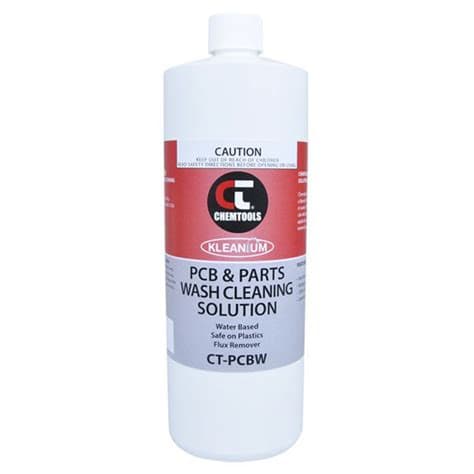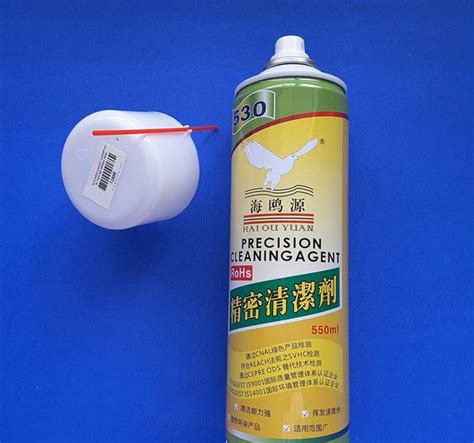Introduction to PCB Flux Cleaning
Printed Circuit Boards (PCBs) are essential components in modern electronics. During the soldering process, flux is used to facilitate the bonding of components to the PCB. However, after soldering, the residual flux can cause various issues if not properly cleaned. In this comprehensive guide, we will explore the importance of PCB flux cleaning, various methods to clean flux from PCBs, and best practices to ensure optimal results.
Why is PCB Flux Cleaning Important?
Flux is a chemical compound that helps to remove oxidation from metal surfaces during soldering, allowing for better bonding between the solder and the components. However, if the residual flux is not removed after soldering, it can lead to several problems:
- Corrosion: Some types of flux can be corrosive and cause damage to the PCB and its components over time.
- Electrical interference: Flux residue can attract dust and moisture, leading to electrical interference and short circuits.
- Aesthetic issues: Leftover flux can give the PCB an unsightly appearance and may be unacceptable for certain applications.
- Compliance concerns: In some industries, such as medical and aerospace, strict cleanliness standards must be met, and flux residue can compromise compliance.
Types of Flux and Their Cleaning Requirements
Before diving into the cleaning methods, it’s essential to understand the different types of flux and their cleaning requirements.
Rosin-based Flux
Rosin-based flux is the most common type of flux used in electronics soldering. It is available in three main categories:
- Non-activated (R): This type of flux has no activators and requires minimal cleaning.
- Mildly activated (RMA): RMA flux contains mild activators and requires moderate cleaning.
- Activated (RA): RA flux has strong activators and requires thorough cleaning.
Water-soluble Flux
Water-soluble flux is designed to be easily cleaned with water or other aqueous solutions. This type of flux is preferred when a high level of cleanliness is required.
No-clean Flux
No-clean flux is formulated to leave minimal residue after soldering, eliminating the need for cleaning in most cases. However, it’s essential to verify the compatibility of no-clean flux with your specific application.

PCB Flux Cleaning Methods
There are several methods to clean flux from PCBs, each with its advantages and disadvantages. The choice of cleaning method depends on the type of flux used, the level of cleanliness required, and the available resources.
Manual Cleaning
Manual cleaning involves using brushes, swabs, or wipes to remove flux residue from the PCB manually. This method is suitable for small-scale projects or touch-up cleaning.
- Materials needed:
- Isopropyl alcohol (IPA) or other suitable solvent
- Brushes, swabs, or lint-free wipes
- Gloves and eye protection
- Process:
- Dip the brush, swab, or wipe in the solvent.
- Gently scrub the affected areas to remove the flux residue.
- Use a clean brush, swab, or wipe to remove any remaining residue and solvent.
- Allow the PCB to dry completely.
Ultrasonic Cleaning
Ultrasonic cleaning uses high-frequency sound waves to agitate a cleaning solution, creating tiny bubbles that help to remove flux residue from the PCB.
- Materials needed:
- Ultrasonic cleaning tank
- Suitable cleaning solution (e.g., water with a cleaning agent)
- Rinse tank with deionized water
- Drying equipment (e.g., air compressor, oven)
- Process:
- Fill the ultrasonic cleaning tank with the cleaning solution.
- Place the PCB in the tank, ensuring it is fully submerged.
- Run the ultrasonic cleaner for the recommended duration (usually 5-15 minutes).
- Remove the PCB from the cleaning tank and rinse it in the deionized water tank.
- Dry the PCB using compressed air or a low-temperature oven.
Spray Cleaning
Spray cleaning involves using a pressurized spray of solvent to remove flux residue from the PCB. This method is suitable for larger-scale projects and can be automated for increased efficiency.
- Materials needed:
- Spray cleaning equipment
- Suitable solvent (e.g., IPA, acetone)
- Rinse tank with deionized water
- Drying equipment (e.g., air compressor, oven)
- Process:
- Load the PCB into the spray cleaning machine.
- Spray the PCB with the solvent, ensuring complete coverage.
- Allow the solvent to dissolve the flux residue for the recommended duration.
- Rinse the PCB with deionized water to remove any remaining solvent and residue.
- Dry the PCB using compressed air or a low-temperature oven.
Vapor Degreasing
Vapor degreasing is a highly effective method for Removing Flux residue from PCBs. It involves exposing the PCB to the vapors of a boiling solvent, which condenses on the PCB and dissolves the flux residue.
- Materials needed:
- Vapor degreasing equipment
- Suitable solvent (e.g., perchloroethylene, trichloroethylene)
- Cooling system for solvent recovery
- Process:
- Load the PCB into the vapor degreasing machine.
- Heat the solvent to its boiling point, creating a vapor zone above the liquid solvent.
- Lower the PCB into the vapor zone, allowing the solvent to condense on the PCB and dissolve the flux residue.
- Raise the PCB out of the vapor zone and allow the solvent to evaporate, leaving a clean PCB.
- The evaporated solvent is then recovered by the cooling system and returned to the tank for reuse.

Choosing the Right Cleaning Solvent
Selecting the appropriate cleaning solvent is crucial for effective PCB flux cleaning. The solvent should be compatible with the type of flux used and the PCB materials. Some common solvents used for PCB flux cleaning include:
- Isopropyl alcohol (IPA): IPA is a popular choice for cleaning rosin-based flux and is compatible with most PCB materials.
- Deionized water: Water-soluble flux can be cleaned using deionized water, sometimes with the addition of a mild detergent.
- Acetone: Acetone is a strong solvent that can effectively remove stubborn flux residue but may damage certain plastics.
- Specialized solvents: There are various commercially available solvents specifically designed for PCB flux cleaning, such as terpenes and modified alcohols.
When choosing a solvent, consider the following factors:
- Compatibility with the flux and PCB materials
- Evaporation rate and drying time
- Environmental and safety concerns
- Cost and availability

Best Practices for PCB Flux Cleaning
To ensure optimal results and minimize the risk of damage to the PCB, follow these best practices:
- Always wear appropriate personal protective equipment (PPE) when handling solvents and cleaning PCBs.
- Read and follow the manufacturer’s instructions for the specific flux and cleaning solvents used.
- Test the cleaning method and solvent on a small, non-critical area of the PCB before proceeding with the entire board.
- Use the minimum amount of solvent necessary to clean the PCB effectively.
- Ensure proper ventilation when working with solvents to avoid inhaling fumes.
- Dispose of used solvents and cleaning materials in accordance with local regulations.
- Regularly maintain and clean the cleaning equipment to ensure optimal performance and prevent contamination.
Inspection and Quality Control
After cleaning the PCB, it’s essential to inspect the board to ensure that all flux residue has been removed and that no damage has occurred during the cleaning process. Visual inspection can be performed using a magnifying glass or microscope, looking for any signs of residue, corrosion, or physical damage.
For more critical applications, advanced inspection techniques may be necessary, such as:
- Ionic contamination testing: This method measures the concentration of ionic contaminants on the PCB surface, indicating the effectiveness of the cleaning process.
- Resistivity of solvent extract (ROSE) testing: ROSE testing involves extracting contaminants from the PCB surface using a solvent and measuring the resistivity of the resulting solution to determine the cleanliness level.
- Fourier-transform infrared spectroscopy (FTIR): FTIR can identify the presence of organic contaminants, such as flux residue, on the PCB surface by analyzing the infrared absorption spectrum.
Establishing a quality control process that includes regular inspections and cleanliness testing can help ensure that your PCBs consistently meet the required standards.
Frequently Asked Questions (FAQ)
-
Q: Can I use household cleaners to clean flux from my PCB?
A: No, it is not recommended to use household cleaners for PCB flux cleaning, as they may contain ingredients that can damage the PCB or leave residue behind. Always use solvents specifically designed for electronic cleaning. -
Q: How do I know if my PCB is clean enough?
A: The required level of cleanliness depends on the specific application and industry standards. Visual inspection can provide a basic indication, but for critical applications, advanced testing methods like ionic contamination testing or ROSE testing may be necessary. -
Q: Can I reuse the cleaning solvent?
A: Some cleaning methods, such as vapor degreasing, allow for the recovery and reuse of the solvent. However, in most cases, it is recommended to use fresh solvent for each cleaning session to avoid contamination and ensure optimal results. -
Q: How often should I clean my PCBs?
A: The frequency of cleaning depends on the type of flux used, the environment in which the PCB operates, and the cleanliness requirements of the application. In general, it is recommended to clean the PCB immediately after soldering and before any conformal coating or encapsulation is applied. -
Q: Can I use ultrasonic cleaning for all types of PCBs?
A: Ultrasonic cleaning is suitable for most PCBs, but it may not be appropriate for boards with delicate components or wire-bonded connections. Always consult the manufacturer’s guidelines and test the cleaning method on a small area before proceeding with the entire PCB.
Conclusion
Properly cleaning flux from PCBs is essential for ensuring the long-term reliability and functionality of electronic devices. By understanding the different types of flux, cleaning methods, and best practices, you can effectively remove flux residue and maintain the highest standards of cleanliness for your PCBs. Remember to always prioritize safety, follow manufacturer guidelines, and establish a robust quality control process to consistently achieve the best results in your PCB flux cleaning endeavors.

No responses yet